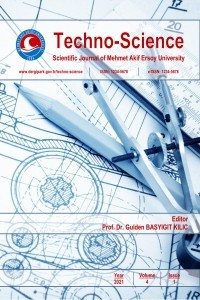Fabrication of microinjector system (SIM) using anodic aluminum oxide
Fabrication of microinjector system (SIM) using anodic aluminum oxide
The present study provide method to construct a novel type of micro-injector system (MIS) for microfliudic delivery inside nanoporous anodic aluminum oxide (AAO) membrane. Now a day’s these micro and nano combined structure gain attention in medical and biological applications. This fabricated micro-nano structure consists of a thin film of anodic aluminum oxide having 50-100μm wider and 12μm deeper channel. A thin Anodic Aluminum Oxide (AAO) is fabricated by combing Mild anodization in oxalic and Hard anodization (H.A) in sulphuric acid. The dimension and an anisotropic etching were investigated by scanning electron microscopy (SEM). These channels are used for fluid flow on micro scale. These channels are connected with a nozzle like microchannel which can perform fluid injection function. This microinjector system is simply manufactured by embedded microchannel and there is no moving micro part inside nanoporous membrane. Fabrication process is mainly based on photolithography and wet chemical etching technique. Wet chemical etching takes place in 5 wt% of phosphoric acid solution. Dimensions and the shape of these microchannels depend solely on anodization and etching conditions. The presented system can be used into two way: in first way the fluid can be injected through nozzle like channel inside AAO and in second way the liquid can be purify and filtrate through nanoporous AAO membran. This study provides a low cost fabricated micro-nano combined structure which could be further used in different types of microfluidic devices and enable the device to perform the function of injection, filtration and purification.
___
- [1] Tiwari, G., Tiwari, R., Sriwastawa, B., Bhati, L., Pandey, S., Pandey, P., & Bannerjee, S. K. (2012). Drug delivery systems: An updated review. International journal of pharmaceutical investigation, 2(1), 2.
- [2] Tao, S. L., & Desai, T. A. (2003). Microfabricated drug delivery systems: from particles to pores. Advanced drug delivery reviews, 55(3), 315-328.
- [3] Ainslie, K. M., & Desai, T. A. (2008). Microfabricated implants for applications in therapeutic delivery, tissue engineering, and biosensing. Lab on a Chip, 8(11), 1864-1878.
- [4] Peer, D., Karp, J. M., Hong, S., Farokhzad, O. C., Margalit, R., & Langer, R. (2007). Nanocarriers as an emerging platform for cancer therapy. Nature nanotechnology, 2(12), 751.
- [5] Panchagnula R. Transdermal(1997) delivery of drugs. Indian J Pharmacol. ;29:140–56.
- [6] Moon, S. J., & Lee, S. S. (2005). A novel fabrication method of a microneedle array using inclined deep x-ray exposure. Journal of Micromechanics and Microengineering, 15(5), 903
- [7] Yu, L. M., Tay, F. E. H., Guo, D. G., Xu, L., & Yap, K. L. (2009). A microfabricated electrode with hollow microneedles for ECG measurement. Sensors and Actuators A: Physical, 151(1), 17-22.
- [8]Cornell, E., Fisher, W. W., Nordmeyer, R., Yegian, D., Dong, M., Biggin, M. D., ... & Jin, J. (2008). Automating fruit fly Drosophila embryo injection for high throughput transgenic studies. Review of Scientific Instruments, 79(1), 013705.
- [9] Zappe, S., Fish, M., Scott, M. P., & Solgaard, O. (2006). Automated MEMS-based Drosophila embryo injection system for high-throughput RNAi screens. Lab on a Chip, 6(8), 1012-1019.
- [10]De Jong, J., Lammertink, R. G., & Wessling, M. (2006). Membranes and microfluidics: a review. Lab on a Chip, 6(9), 1125-1139.
- [11]Lee, W., Schwirn, K., Steinhart, M., Pippel, E., Scholz, R., & Gösele, U. (2008). Structural engineering of nanoporous anodic aluminium oxide by pulse anodization of aluminium. Nature nanotechnology, 3(4), 234.
- Yayın Aralığı: Yılda 2 Sayı
- Başlangıç: 2018
- Yayıncı: Burdur Mehmet Akif Ersoy Üniversitesi
